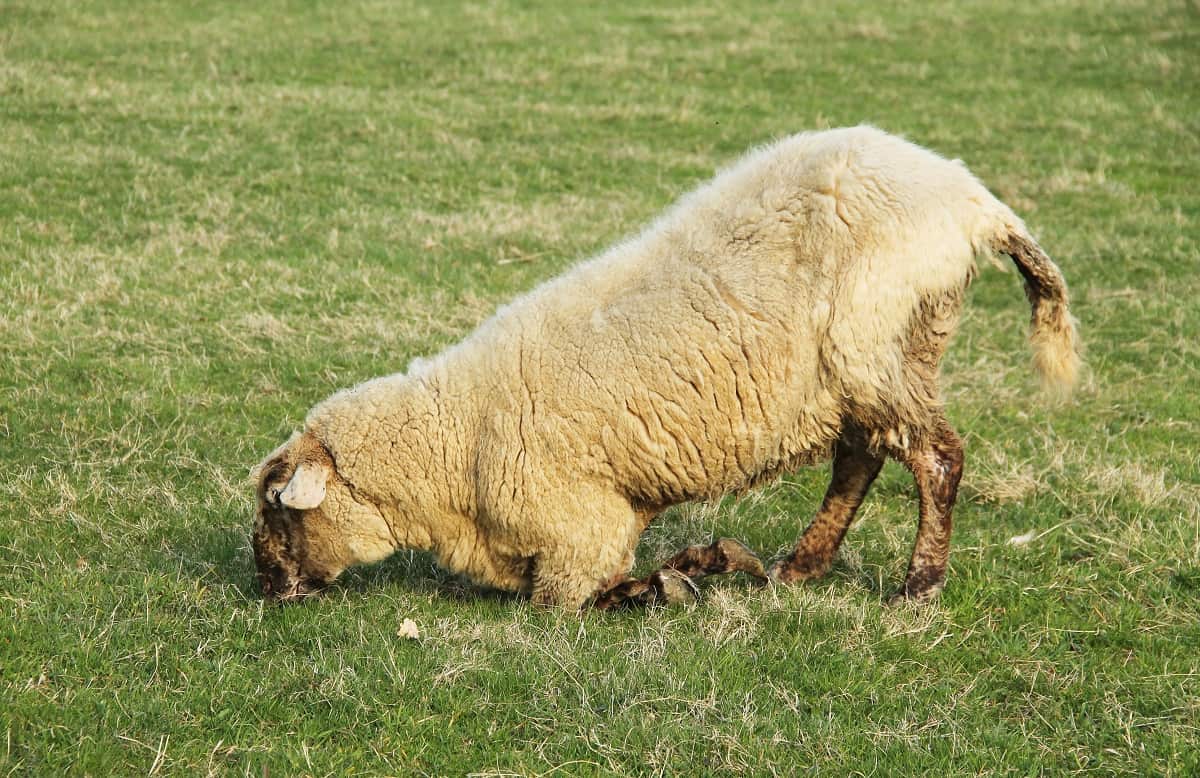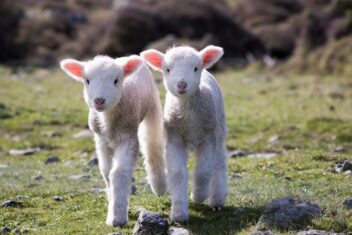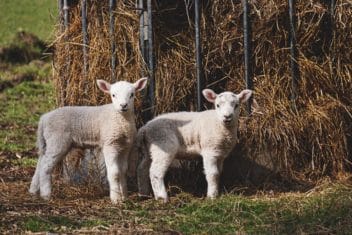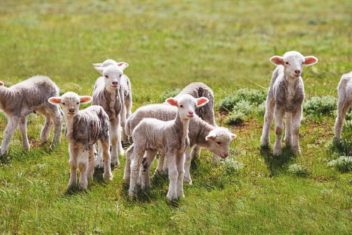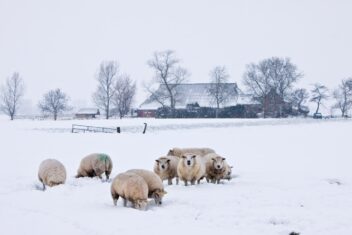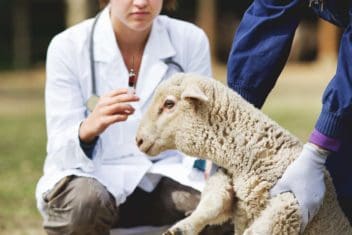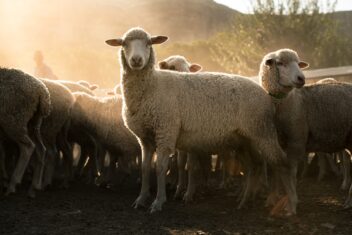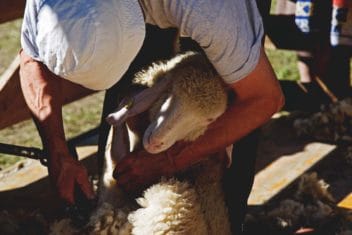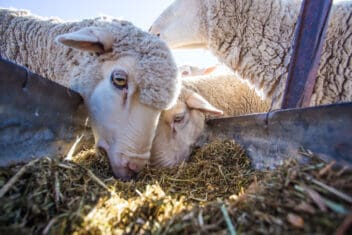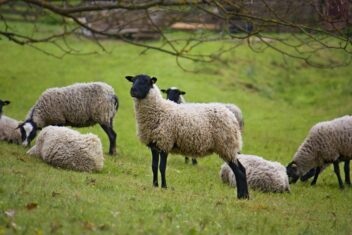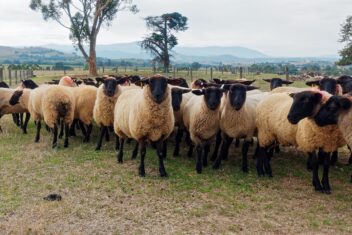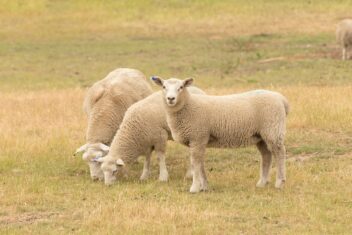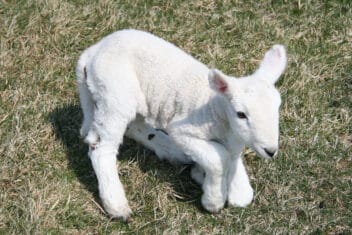Every few months, it’s time for my husband and I to head out to the sheep barn and complete one of our least-favorite tasks.
What is this dreaded activity, you might ask? For some, it’s mucking out soiled bedding – for others, it’s administering dewormer.
For us, it’s trimming hooves.
I suppose for some flocks of sheep, it might not be that challenging to trim hooves. We have Icelandic sheep that are cagey at best and flighty at worst, so it’s very challenging to get them to hold still long enough for us to take a look at their feet.
However, hoof trimming is necessary, if for no other reason than to prevent footrot.
Footrot is a common disease among goats and sheep, but it’s fortunately preventable. In this article, I’ll tell you everything you need to know about footrot in sheep – as well as how you can both prevent and treat it.
What is Footrot?
Footrot is a disease that not only can be extremely painful for sheep but also costly and difficult to deal with for sheep farmers.
It is caused by the coexistence of two types of bacteria – Fusobacterium necrophorum and Dichelobacter nodosus. Although sheep tend to be the most commonly affected species, other animals, like deer, horses, goats, and cattle can also suffer from footrot. Sheep tend to be more severely impacted than even goats.
By itself, F. necrophorum does not cause footrot. Instead, it causes a disease called foot scald. This bacteria normally lives in the large intestine of ruminant species and is found naturally in soil and manure.
However, when the weather turns cold and wet and when mud and manure are allowed to accumulate, the two build up between the hooves and toes of your sheep and lead to irritation.
When paired with D. nodosus, the bacteria can excessively irritate the interdigital area of your sheep. D. nodosus can live in the soil for up to 2 weeks yet lives in the hoof area for far longer if there is the right environment.
Causes of Footrot
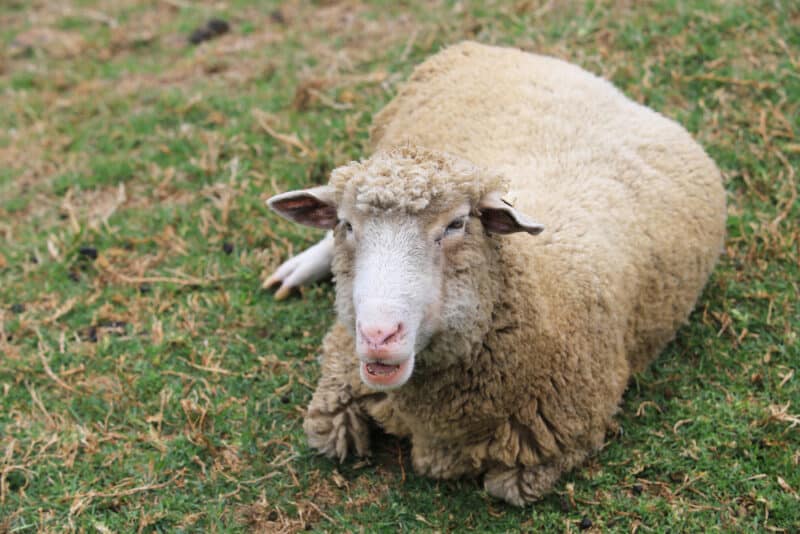
Footrot is most common in areas that are consistently moist and with a temperature range between 50-70°.
The two bacteria mentioned above are naturally occurring bacteria.
However, they only become problematic when the weather conditions are ideal, and when your sheep are already vulnerable in some way.
For example, if your sheep have overgrown hooves (a product of a failure to keep them trimmed!). This can create ideal conditions for footrot to spread. So, too, can frequently walk on hard, frozen ground, as it irritates the soft tissue in the feet.
Any kind of trauma or injury to the hoof area can open up the door for the footrot-causing bacteria to enter.
Symptoms of Footrot
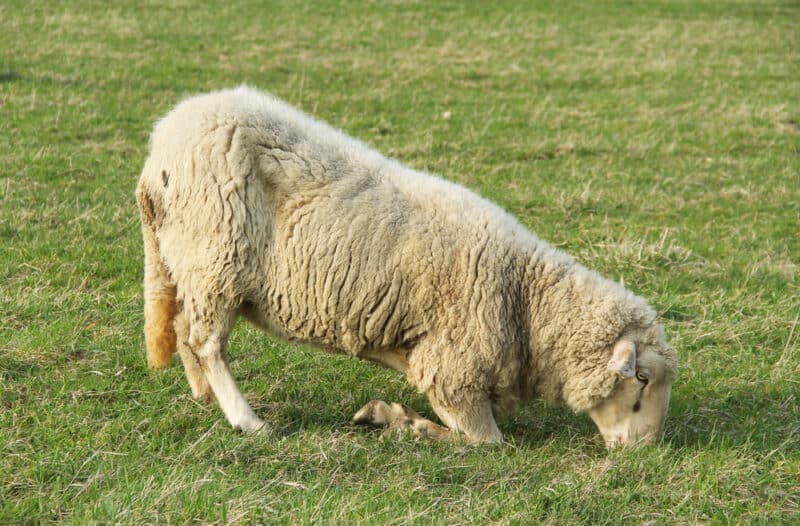
Footrot leads to a long list of potential problems in the flock. More often than not, it leads to lameness – a condition that is sometimes so severe that the only solution is to cull the affected sheep.
It can also lead to poor milk, wool, and meat production. Animals gain weight slowly or not at all because they don’t want to put weight on their feet to eat.
If left untreated, footrot can also have long-term impacts on the reproductive abilities of your flock (likely due in part to the poor weight gain).
If your sheep are suffering from footrot, it might go unnoticed for quite some time.
There is an old saying that remarks that “sheep are born wanting to die,” something that is attributed to the fact that sheep sometimes die randomly without any other signs of illness.
However, I think that it’s more likely that sheep are really good at hiding symptoms of being ill, and so you don’t notice it until it’s too late.
That’s why it’s important to keep an eye out for more subtle signs of footrot. For example, you might notice that your sheep tend to lie down for a long period of time.
You might not see them on the ground, but if you notice that a certain ewe has rubbed all the wool or hair off a specific body part (like her knees or flanks) it might be because she is spending too much time on the ground.
You might also see your sheep carrying or favoring the affected leg.
Footrot – or Something Else?
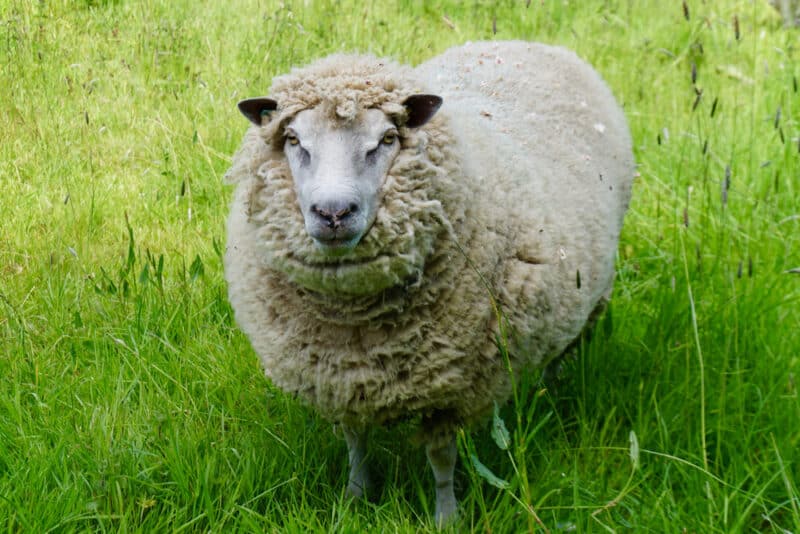
Sometimes, there are secondary conditions that accompany footrot – or that are confused for footrot. You might suspect an injury or some other trauma to the leg.
If it’s truly a footrot issue, the tissue between the toes will be red and inflamed. Left untreated, it can turn into a virulent footrot.
This is a progressed stage of the disease and happens when bacteria enter the hoof and begin to eat away at the hard tissue of the sole.
In extreme cases, the hoof horn can separate completely from the hoof wall. It will develop a foul smell and can become black and tarry in appearance. Flystrike can occur in severe cases, too.
Preventing Footrot
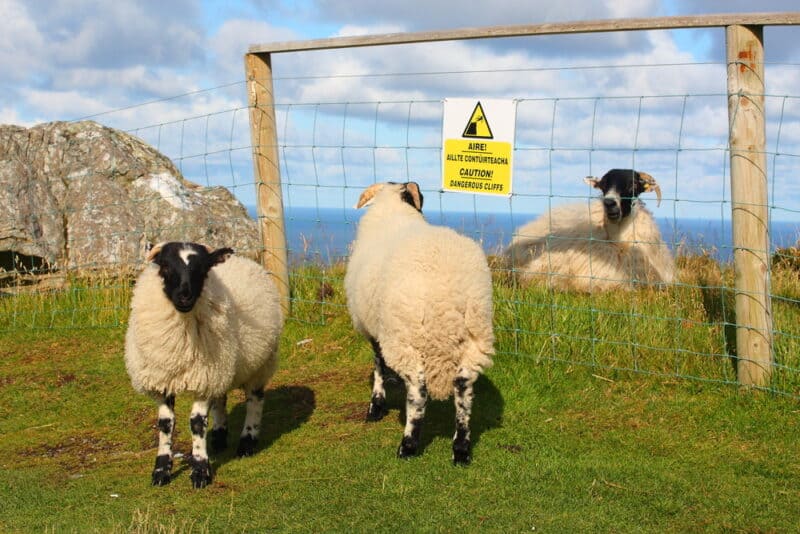
1. Vaccinations
Some vaccinations can help prevent footrot. In most cases, these probably are not necessary unless you have a history of footrot susceptibility and infection in your flock. Most vaccines protect against footrot for 4-6 months.
If your sheep already have footrot, the vaccines can also help infected areas heal more quickly. Just keep in mind that, when raising meat sheep, there is a withdrawal period prior to slaughter.
2. Hoof Trimming
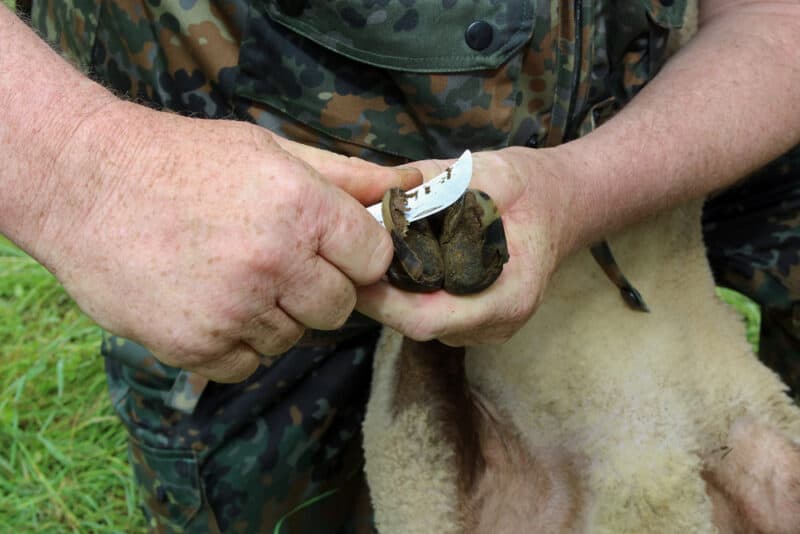
Hoof trimming is an essential part of managing a flock of sheep. Though unpleasant, it helps air get into all the nooks and crannies of the hoof and makes it much more difficult for bacteria to reproduce. At a minimum, sheep hooves should be trimmed once or twice per year (more often for vulnerable sheep).
Trimming will help create a flat surface to make it more difficult for mud and manure to get packed and compacted inside the hooves. It can also prevent other infections and injury, too.
3. Proper Management
One of the best ways to prevent footrot also serves as a helpful tactic in combating other kinds of disease on the farm.
Practice proper management and make sure your sheep have access to a solid feeding program, plenty of fresh, clean water, and clean housing.
Bacteria spread much more easily when the ground is moist and contaminated with manure. Move feed and water areas frequently and get your animals on fresh pasture as often as possible. This is also a good practice to prevent internal parasites, I might add!
Very rarely, footrot bacteria can be spread by your boots, vehicle tires, feeders, hoof trimmers, or other equipment. To rule this out, just make sure you keep things clean and sanitary, particularly during high-risk periods of the year.
4. Select Healthy Animals
Genetics play a large role in an animal’s vulnerability to footrot. While nutrition and environmental conditions are usually more important in determining which animals are susceptible, things like foot shape and structure (characteristics that are passed on between generations) can also impact the health of your sheep.
There is a misconception that once an animal has suffered and then recovered from footrot, it cannot get it again. Unfortunately, sheep do not develop any kind of immunity to footrot. If a sheep has had footrot once, it can get it again – and again, and again.
That being said, some genetic markers provide natural resistance to footrot. Although there is of course no way for you to know which animals are resistant, it’s a good idea to keep good breeding records and note which animals remain healthy (and cull those that do not).
One other important thing to note is that footrot is often spread within a flock by the introduction of an already-infected animal to the flock. When you purchase new sheep, be sure to inspect their feet carefully and ask the seller about the animal’s history of footrot.
Quarantine the new arrival for at least 30 days and be sure to trim hooves before you let them commingle with the rest of your animals.
How to Treat Footrot
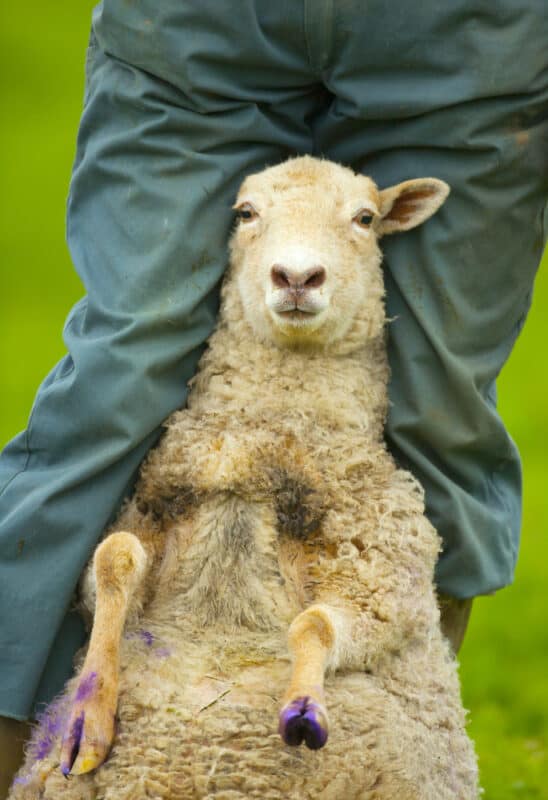
1. Remove Affected Animals
If you suspect footrot as the cause of your sheep’s lameness, you need to isolate an infected animal as soon as possible. Footrot can spread quickly throughout a flock of sheep, perhaps before you even realize it.
Get the sheep into a separate area and make sure everything is cleaned thoroughly before you introduce sheep to a barn or pasture area.
2. Trim Feet
Next, you need to trim the feet of your sheep. A mild case of footrot may require just a normal trimming, but a more severe case may necessitate the removal of all necrotic tissue.
This can cause bleeding, so make sure you have some Blu-Kote or a similar antibiotic liquid bandage on hand.
3. Foot Baths
After trimming your sheep’s feet, it’s a good idea to run her through a footbath. This will reduce the risk of infection and also can help soothe the irritated tissue.
A proper footbath will include a solution of 10% zinc sulfate. Have your sheep stand in the bath for up to 15 minutes. This will reduce the risk of infection and also calm down some of the inflammation. Zinc sulfate also serves as a drying agent that makes it more difficult for bacteria to grow.
Some people use a copper sulfate solution, but I don’t recommend this. Copper can stain wool, which is problematic if you are raising sheep for this purpose, and it is also toxic to sheep. If your sheep happen to taste the footbath solution, it can be fatal.
4. Antibiotics
Finally, you will need to treat your sheep with an antibiotic (usually penicillin or streptomycin, or a combination of the two) to prevent and treat the bacterial infection.
These must be purchased from a veterinarian, but it’s a good idea to keep some on hand if you are raising large numbers of sheep.
If you’re worried about footrot becoming a problem in your flock, take the steps I described above to cut the issue off before it can even become an issue. Footrot is one of those problems that are easily preventable but not quite as easily managed. Be proactive, and you’ll start off on the right foot for sure!
